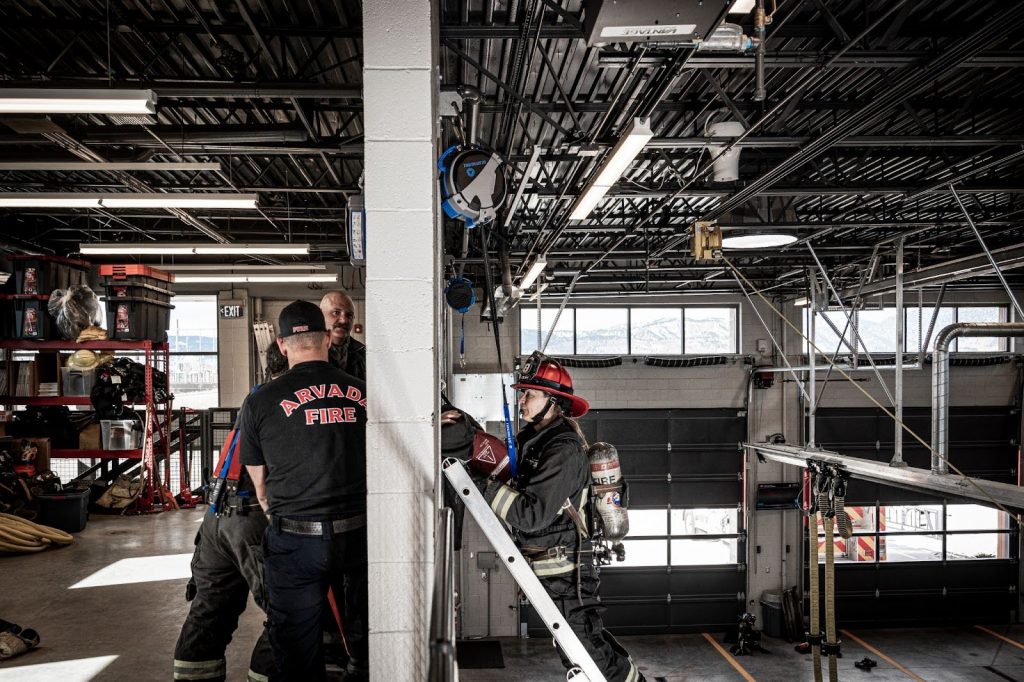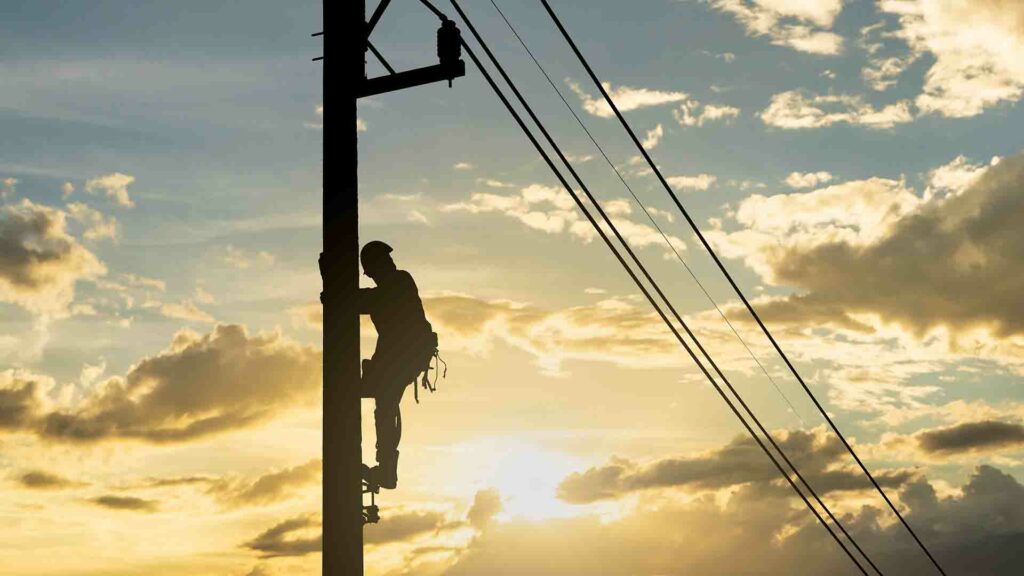Beyond safety and efficiency, are there any other benefits to training on TRUBLUE?
Just today I tried a new system on the self-bailout where I self-rescue. There's no ladder and I have to roll out of the window. My captain had his device and said, ‘Why don't you try mine?’ Well, it was a modified controlled descent device. I wasn't familiar with the device, but there's no way really to try it until you go out the window.
Knowing that the TRUBLUE system is up there, regardless of what I am attached to on my main line, I know my safety is going to work. I know my safety is okay, and it's going to slowly descend me to the ground.
Knowing that, I was okay with throwing that last leg out the window and going out over the window. Regardless of being a little afraid of heights or not, it's okay to just go out and try that.
Another of the guys, he had the yellow rope with a Munter hitch. Well, I've never tried the Munter hitch. I heard it doesn't work that well, but I'm willing to try it because I have the TRUBLUE attached to me. No matter what, I know I'm going to the ground in a controlled manner.
How does training with TRUBLUE compare to the way you trained before?
I remember two years ago, we went to a bailout training and I remember talking to my crew and we said, ‘If this is bad, we're going to tell them that we're not doing this.’ Because we heard other crews had mattresses on the ground or they had gym pads on the ground.
I said, ‘I'm not ending my career over this. I'm not afraid of heights, but I don't want to go out and get hurt.’
I don't mind getting hurt saving somebody's life. I don't even mind getting killed saving somebody's life. But jeez, I really don't want to get hurt in training. TRUBLUE helps stop that. Because it works. Because it's safe, you know?
Back in the day, it was primitive. We had guys get hurt. It happened. We had the ladder kick out. But we've come a long way, you know, and this is right. This is safe. This is better and this is efficient.
How did your training session go earlier today?
We’re running guys through a lot faster and better. Then you get good at it, right? If you do it once or twice, you're like, ‘Wow, that was cool. I kind of maybe learned it.’ But if you do it five or six or ten times, you get pretty good at it.
I mean, there's some crazy stuff out there. You can roll up a magazine and put your main line on a magazine in the corner of the windowsill and then roll out the window. How do you practice that? Legitimately, how do you practice that? Well, you could practice it with the TRUBLUE because it’s going to lower you to the ground.
Last night we had the tool in the window. You're holding the tool with your hand, and you just roll out the window with your main line. There's no way to practice that without the TRUBLUE. What are you going to do? I guess the alternative would be to have a guy hold you on a safety line with a moon edge, and you're hoping that the tension is right. But it's so hard to get the tension correct. He has to have the tension just right, otherwise you're going to fall.
Here’s the other alternative: you’ve got a safety line. The guy just slipped out and now he’s loaded the safety line. Now you're going to take that out of service. Can your department afford to take it out of service?
With TRUBLUE, you can see what your gear does when you actually fall. When you go out and load the system, you can actually see what that feels like. That's important. That's important to me.
And again, TRUBLUE afforded that opportunity. I can't get that anywhere else.
Any final thoughts about training on TRUBLUE?
You can make training more realistic. You can make it efficient. You can make it practical.
There's nothing worse in training than thinking, ‘This isn't the way we really do it. This isn't the way it really works.’ Then you just ruined the training. Then you just made it ineffective. Then you just lost me, you know? I mean, I'll go through the motions. I'll do the best that I can, but it's so much more potent when it's realistic. Then I know I got something out of it. I know I can do it. When the bell goes off at two in the morning, I know I’ve got it in me.
TRUBLUE affords me that opportunity. And that's a lot. Yeah, it's a lot.


